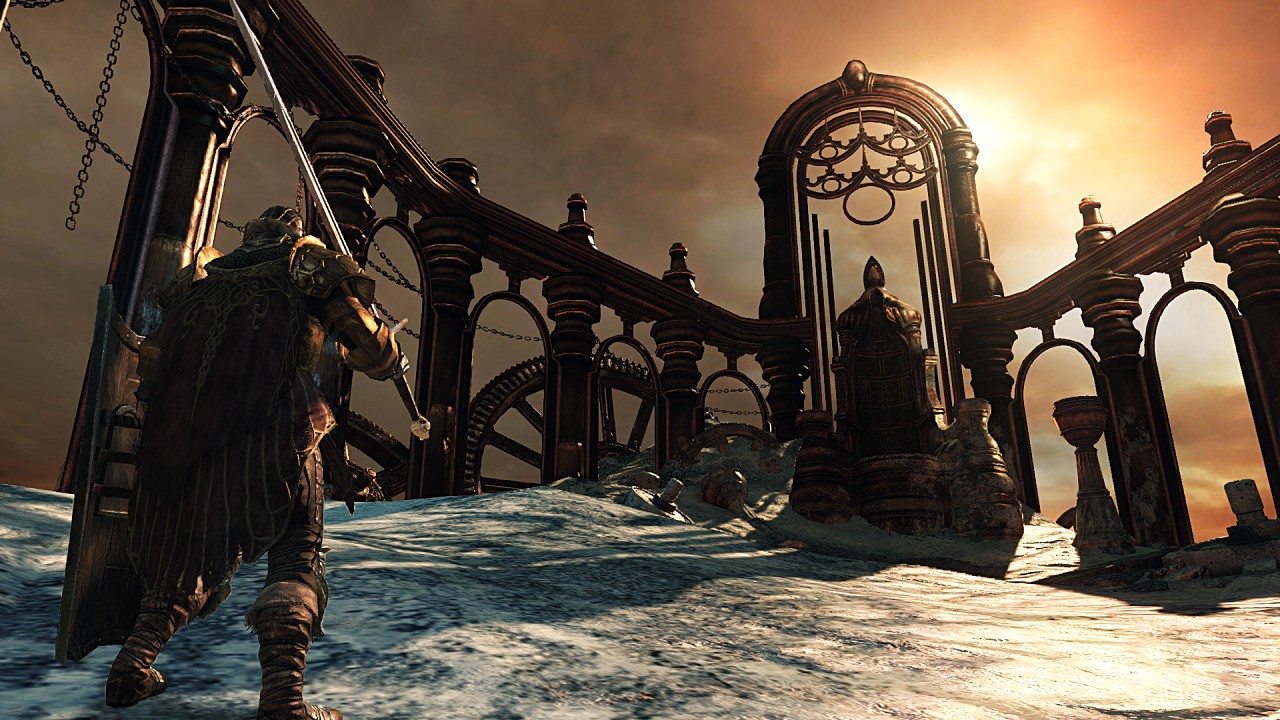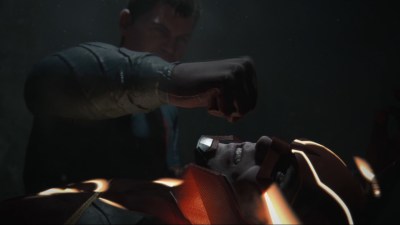A few months since the release to Dark Souls 2, many have started to crave a little more Souls. It’s understandable; it is, after all, a rather good game - though not quite on par with its predecessor. Last week From Software released Crown of the Sunken King, the first of three planned downloadable chapters for Dark Soul 2, and we’ve been hard at work exploring its numerous nooks and crannies ever since.
Many have stated that The Sunken King will be a return to what made the Souls games great in both difficulty and level design, and this is largely the case. Those familiar with my original Dark Souls 2 review will know that I raised issues with the level layout, boss design, and overall lack of creativity associated with a Souls game. So does Crown of the Sunken King measure up to the lofty expectations set by fans and critics alike?
This is a call back to the implementation of Dark Souls’ excellent DLC Atorias of the Abyss, which was missed by many who purchased it or had special edition copies of the game. There are no NCPs to explain where to go or what to do - you’re simply placed back in the world and expected to explore. Locating the door to Shuvla might take a bit of leg work then, but that’s part of the charm of all the Souls games.
Crown of the Sunken King adds The Sanctum City, a large area hidden in the depths of the Drangleic, one as large as any within the main game, divided up into 3 areas that all fit within the aesthetic of the larger zone, woven together with hidden paths and vertical layers providing a deeper sense of discovery and mystery - something lacking in Dark Souls 2 proper. There are hidden areas that are easy to miss unless you search for them, and the whole experience feels very familiar.
Props should be given to the level designers as they’ve created one of the most unique area designs in the entire Souls Franchise, one that is as difficult to navigate as it is difficult to fight through. The monster placement is spot-on and there are just enough hidden traps, ambush locations, and switches to keep the frustration fun as you explore a maze-like labyrinth of moving platforms and hard-to-reach areas.
Through the use of some well-hidden switches you can manipulate platforms, doors, and walkways to provide new paths and strategies to move forward. It’s not readily apparent what change will be triggered by each, and it’s easy to miss them as they’re hidden all over the place. In fact, it’s entirely possible to not even realize these switches are switches when you first encounter them, as there’s no explanation behind them.
Another issue I had with Dark Souls 2 was that the overabundance of bonfires and fog walls trivialized the difficulty of many levels and cheapened the discovery of a fog wall. The game was littered with generic mini-bosses that thankfully have been toned down here, with a total of three bosses and four fog walls. Now when you locate a fog wall it’s a big deal again; you know that something dangerous is lurking behind them. The distance between bonfires has also been increased to add more tension to death and the recovery of lost souls. Getting to each of the three bosses requires you to traverse unforgiving gauntlet areas filled with tough swarming enemies and curing idol traps.
Anyone familiar with the original Souls games will recognize Sunken King as a return to the design philosophy of those titles, and welcome the challenge that it represents. Unfortunately the boss design continues to disappoint when compared to the imaginative challenges of previous games. Bosses are little more than generic enemies who are arbitrarily difficult because of their numbers, or unique bosses devoid of creative and difficult mechanics. The trio boss - which is optional – proves to be the most difficult because of sheer numbers, which feels like an artificial way to up the difficulty rather than challenging you to adopt new tactics. I ended up smashing my face against them and their incredibly long gauntlet for over 2 hours. The issue is that the design is still as lazy as it was in the main game - the bosses are just cookie-cutter enemies with no special abilities.
The good news is that From Software clearly knows that they’ve designed bosses that almost always require more than one person to fight as there are plenty of NPC summoning signs along the way to assist you on your journey. But this also trivializes the other two bosses and I easily one-shot them with a summoned person assisting. You have to make a conscious decision to not summon in assistance, and frankly many won’t have that kind of willpower when they reach the fog wall.
Crown of the Sunken King is filled with cool items and abilities, but having plunged over a hundred hours into the main game, my inventory was already so cluttered that it was hard to keep track of anything new. The sorting system still feels broken, and the lack of a choice to sort items alphabetically is beyond puzzling. But, unlike with Dark Souls’ DLC the weapons, spells, and items are not game-breaking; instead they are more of a compliment that rarely replace anything obtained before.
Players unfamiliar with previous games may find Sunken King to be unforgiving and confusing to navigate - with switches that are hard to keep track of, a maze-like level design, and enemies that will quickly roll over you in greater numbers. Furthermore, control responsiveness is still an issue, making the game feel clunky to play. But when you get down to it, all of these things are what makes a Souls game fun – the quirks and frustrating lack of explanation are part of its charm. So much within the Sunken King feels like Dark Souls that it makes you wonder if From Software has been listening to the complaints leveled at the main game.
But when this first chapter ends it does so in an anticlimactic way. There’s no big finish, no cliffhanger; you’re just done. You can tell you’re done, but at the same time you’ll question it until you find yourself saying - “oh, ok then. That was that”. In other words, it feels as though the decision to to break the DLC up into three separate chunks was financial one rather than organic.
Depending on how good at Souls you are, the run time can be anywhere from three to ten hours, with six seeming to be the average run time. It’s well worth the cost, but you can always be summoned into the sunken city by a friend if you want to try before you buy. Crown of the Sunken King fixes some - but not all - of the complaints leveled at Dark Souls 2, but brings in a few new ones of its own. But if you found yourself wanting more out of Dark Souls II then you’ll want to pick this up. It’s a shift back to the original concepts that made the Souls games great in the first place, but fails to fix some its major flaws. It’s all part of the charm though, and something that is to be expected by now.
Crown of the Sunken King is an excellent addition to a game that felt ever so slightly lacking the first time around, but if you never played the previous games, you might be in for something of a shock. Challenging, engrossing, and sometimes frustrating, it’s a fine start to what looks to be a fantastic run of extra content.

